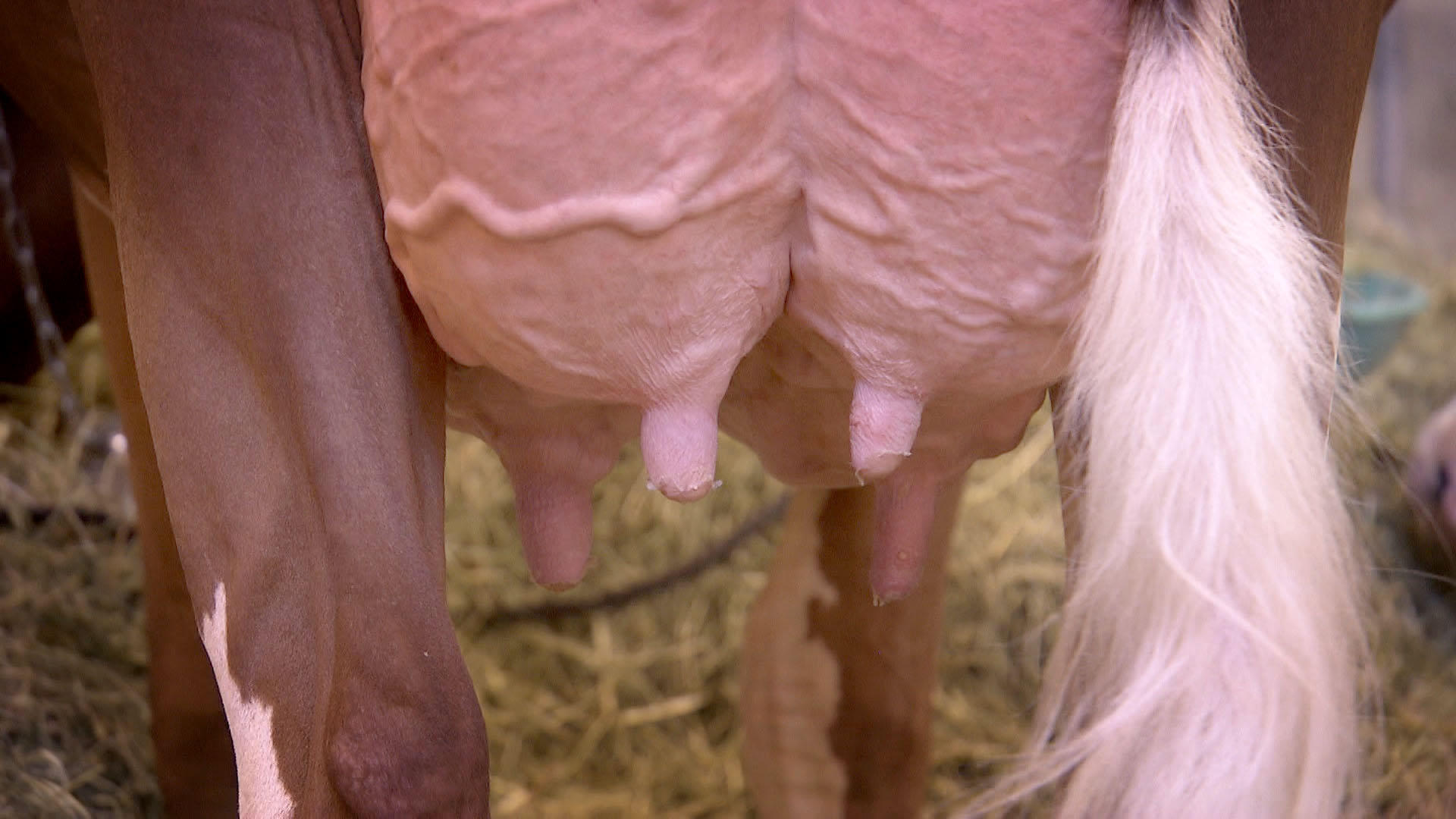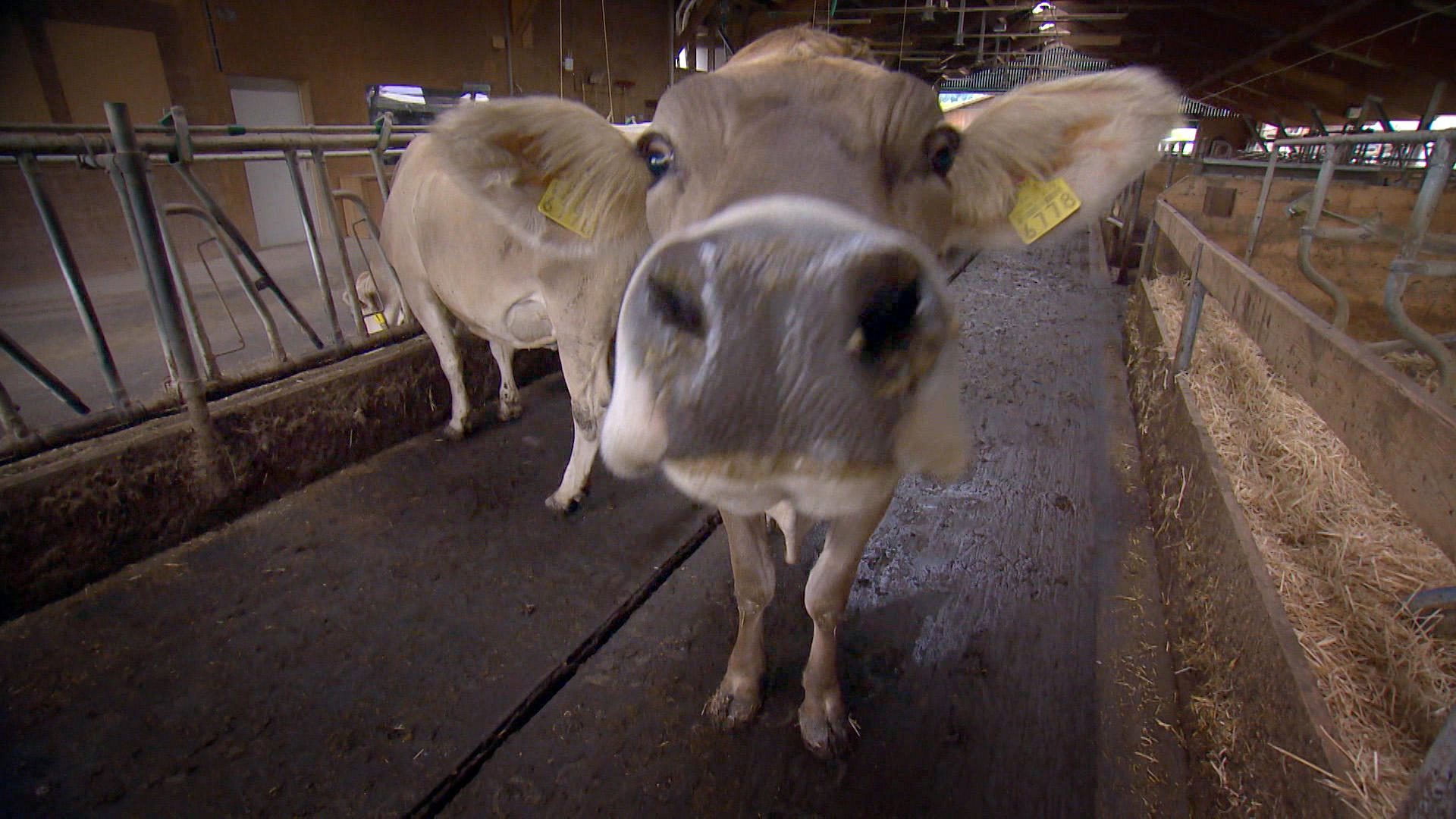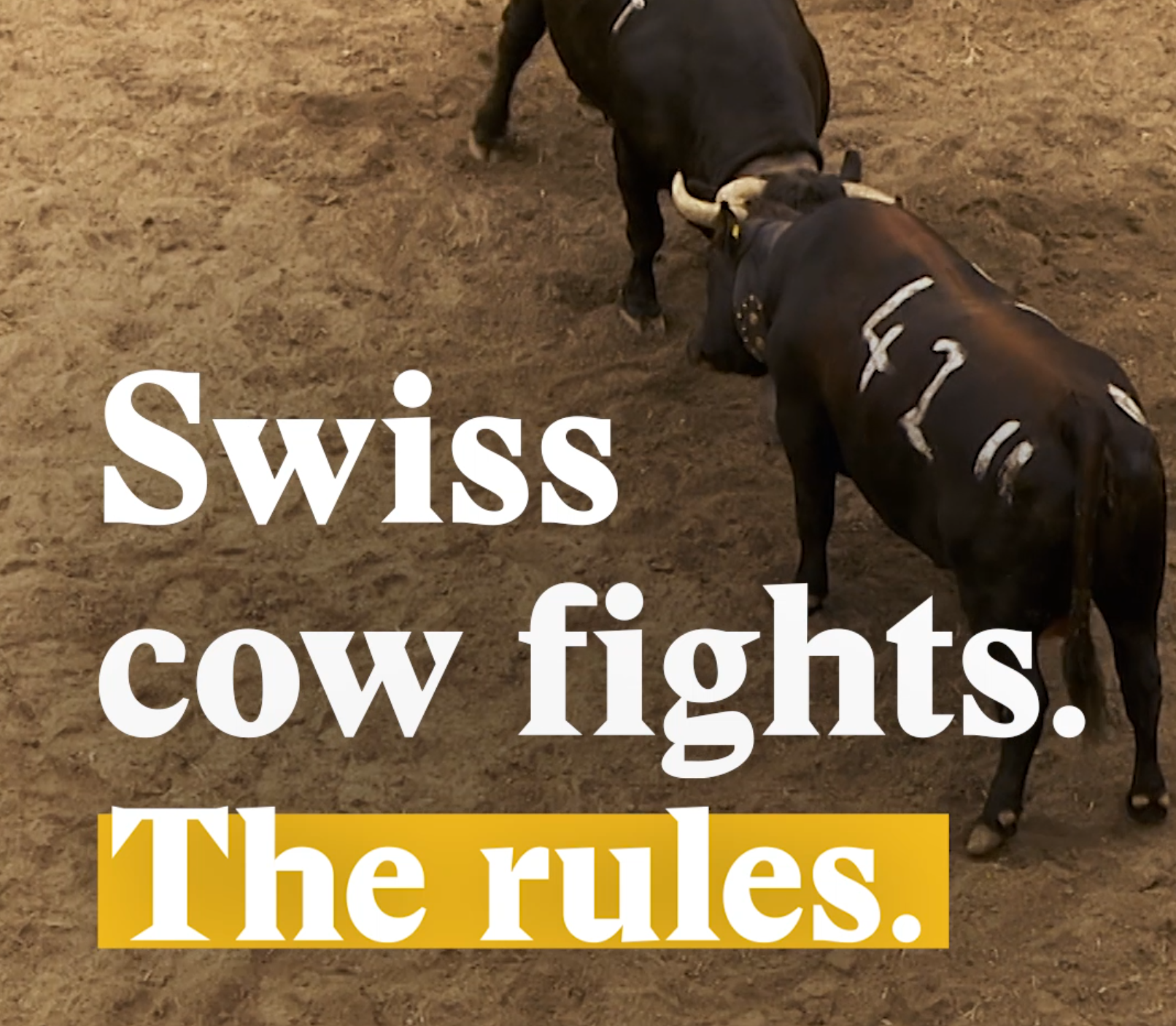What politicians can learn from Swiss cows
My favorite was number 73. She had a certain dignity about her. When potential intruders approached her space, she gave off an aura of invincibility causing them to walk away. When potential enemies came too close, she chased them off with a simple flick of the neck. Those familiar to her stayed nearby, confident that if they were threatened she would come to their defence.
There was no question; number 73 was a natural leader.
When the Hérens breed of cows are put out to pasture in the mountains after the snow has disappeared, fights break out. Enclosed in a giant field, separated by ropes and painted with numbers according to their owners, the cows are initially kept in closures, pawing at the ground and bellowing for a fight. When the barriers are brought down at an exact Swiss time, the groups begin to separate, and then all hell breaks loose.
Inalpe is a special tradition in the canton of Valais. An organized version is often shown live on television with cows fighting in constructed arenas. The losers are walked off by their disappointed handlers until the undefeated queen is ceremonially crowned. Spectators come from near and far, the crowd hooting for their favourites like a World Wrestling extravaganza. The Hérens cows are even transported to other countries for their fighting spectacle.
For this New Yorker, a day in Valais near Haute Nendaz watching an Inalpe was a reminder of New York City life as well as international relations.
The spectacle of the competition to determine which cow will be the leader for the entire summer season – leading up and down the mountain as well as back and forth from the barn – is a representation of more than just bovine behaviour. There are clear similarities to how humans interact.

The Hérens breed is sturdy, weighing in the neighbourhood of 800 kilos. There was a surprising docility about them as they were initially led around by their owners. Young women proudly promenaded them on thick ropes, showing off the magnificent bells and collars like society women showing off their dogs at the Westminster Kennel Show in Madison Square Garden. And like domestic pets, the black beasts responded to affectionate scratches and pre-fight treats.
Each owner’s group initially stayed together in a limited area enclosed with a simple non-electrified rope. The cows peacefully profited from the grass and sunshine. Within each group there was a distinctive harmony, with the leader easily identifiable by a red number instead of white. Within defined borders, there was peace. Each clan in this specific breed had its own order, although occasional pawing at the ground and bellowing indicated that eruptions of violence were just under the surface.
When bovine order breaks down
What happened next in the field closely resembled city life and inter-state relations. Once the ropes were brought down – in a globalizing scenario – order broke down. A type of anarchy took over. Cows began to wander beyond their assigned territory; they interacted with cows from different clans beyond established borders. Fights broke out, not so much to hurt the other animals – the actual combats usually lasted no more than thirty seconds – but to establish power relations.
The object was to be the leader of the entire group. The goal of each individual fight to determine who was more powerful. The losers generally trotted away, cognizant of their defeat and accepting that they would never be leaders of the larger group. (I had a special fondness for number 101 who kept fighting although she had lost several battles. The lady just wouldn’t give up.)
What about the owners? During the fighting, they ran around the field with sticks separating cows when horns become entangled in the elegant collars, and stopping other cows (third parties) from interfering. Much like international lawyers and the United Nations, the owners used soft power to keep some form of order. The cows seemed to understand the message; a mild tap (sanction) was more than enough to change behaviour.
Playing by the rules
The fighting took place in a specified area that the animals never transgressed. They seemed to understand territorial limits, proportionality and the rules of the game. No electricity was needed to keep them within a given territory. No beating needed for them to abide by customary norms. Once power relations were established among them, the cows usually returned to the area they first settled in as well as returning to their group. Once the initial surprise of being in a new surrounding with new neighbours had subsided, order returned but in a larger constituency.
The result of the afternoon’s horn-bashing was that the sovereignty of the small groups had become transformed to a larger body with new borders and new power relations. The most powerful of the entire group was now the queen, the accepted leader of the different clans. She would be supreme for the summer until the cows returned to their winter barns.
Her reign would be limited by an unwritten constitution. Next year the ritual would start all over. Among the Hérens race, there is no unlimited sovereignty of a queen for life. The right to be the head of the herd must be earned each year among the new constituents. Power is not hereditary, although I was told that past winners had the advantage of knowing the terrain. Moreover, there are no coup d’etats during the grazing. Throughout the summer season, there is respect for a well-deserved authority. The rules of the game are universally accepted.
Moo. Why can’t we be more like cows?
The views expressed in this article are solely those of the author, and do not necessarily reflect the views of swissinfo.ch.
Opinion series
swissinfo.ch publishes op-ed articles by contributors writing on a wide range of topics – Swiss issues or those that impact Switzerland. The selection of articles presents a diversity of opinions designed to enrich the debate on the issues discussed.

In compliance with the JTI standards
More: SWI swissinfo.ch certified by the Journalism Trust Initiative




You can find an overview of ongoing debates with our journalists here . Please join us!
If you want to start a conversation about a topic raised in this article or want to report factual errors, email us at english@swissinfo.ch.